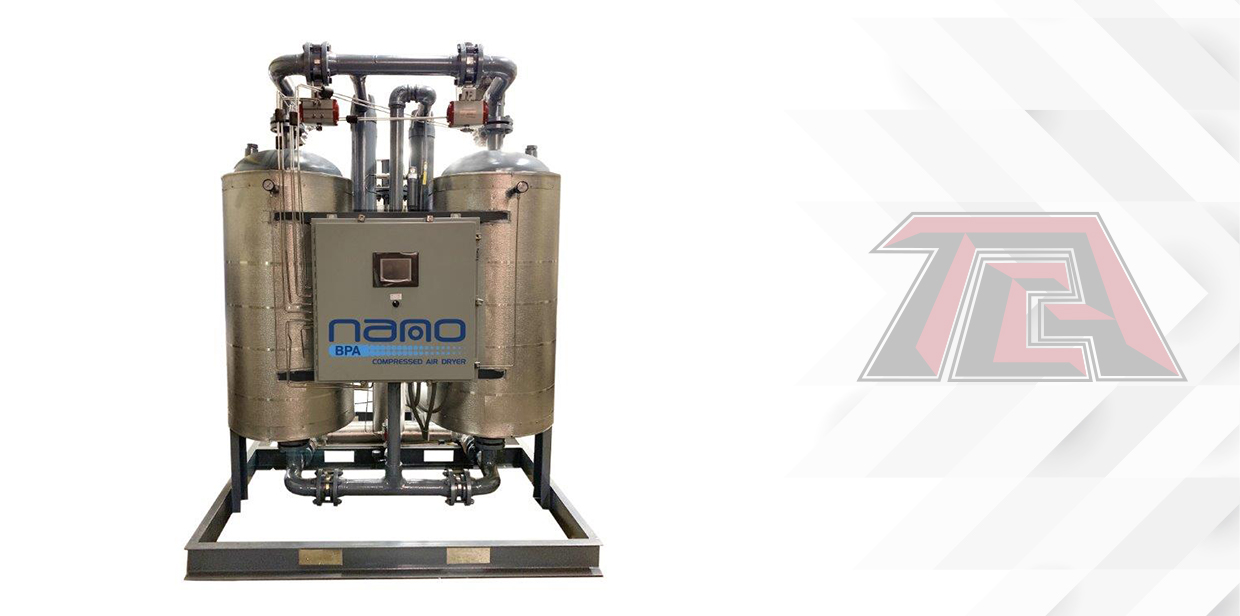
What’s New
How Air Dryers Prevent Condensation Build-Up

All atmospheric air includes water vapour, which means moisture is always present in your compressed air system. As we enter the summer months, higher temperatures and ambient dewpoints can cause the presence of condensation to be even more pronounced. Unfortunately, water accumulation has the potential to become problematic for a number of different applications as the excess moisture gets transported into the compressed air stream. While it is virtually impossible to prevent zero moisture from entering your equipment, using an air dryer can help get rid of condensate build-up and protect your compressed air system from potentially costly damage.
Selecting the Right Compressed Air Dryer
The air that makes its way into your compressed air system should be dry in order for the equipment to work properly. After all, moisture can adversely affect the components of your system by causing rust and increased wear and tear of moving parts, in addition to producing substandard products. To prevent moisture contamination from your compressed air systems, a certain type of device that eliminates naturally occurring moisture is required. In order to determine the best way to do this, consider the type of system you’re using as well as the application.
Read on to take a closer look at how different types of air dryers can prevent condensation build-up in compressed air systems:
- Refrigeration Drying: This type of drying utilizes refrigeration to cool the compressed air leaving the compressor thereby condensing the moisture from the air stream. The two types of refrigerated air dryers include cycling and non-cycling but both types use a refrigeration system to bring the temperature of compressed air as close to freezing as possible in order to eliminate most of the moisture.
- Desiccant Drying: This drying process involves the adsorption of water onto the surface of a desiccant material. Some of the most common types of materials used for this purpose are activated alumina, silica gel and molecular sieves. The process of desiccant drying begins when water vapour moves into an area of lower water concentration within the pores of the desiccant. Once inside, water molecules are naturally attracted to the surface of the desiccant where the water remains on the surface until it is stripped off.
- Membrane Drying: This drying process incorporates selective permeation of various gas components found in the air in order to separate out the water molecules. As wet compressed air enters the cylinder, water saturates the membrane coating and remains on the fibres as dry air continues to pass through to compressed air ystem.
- Absorption Drying: This is a chemical drying process in which water vapour binds to an absorption material such as sulphuric acid or sodium chloride. While these materials can come in a solid or liquid form, this type of drying method is far less common than the other drying methods available.
Explore Our Line of State-of-the-art Compressed Air Dryers
The demand for clean and dry air for industrial applications has increased immensely in recent years. As a result, drying technology has made significant advancements and dryers have now become an integral component of compressed air systems. Depending on your application, there can be several things to consider before buying a compressed air dryer. If you need help determining what type of air dryer to choose, speak to an expert from Trident Compressed Air who can help you make an informed decision. Here, you will find a comprehensive line of compressed air dryers that are specifically designed to suit a variety of conditions and applications. From refrigerated dryers to regenerative desiccant dryers and more, our systems use the latest technologies to meet a range of dew point requirements. Additionally, if you need further assistance utilizing your new dryer system or are still experiencing issues with excess moisture, our experienced maintenance team can assess your system and take the appropriate steps to get you up and running as soon as possible.
Please contact our office at (519) 737-9905 or fill out our online form for more information about our compressed air system products and services. Our service department is on call 24 hours a day and we are eager to help answer any questions or concerns you may have about your equipment.

